
Question and Answers Forum
Question Number 79190 by mr W last updated on 23/Jan/20
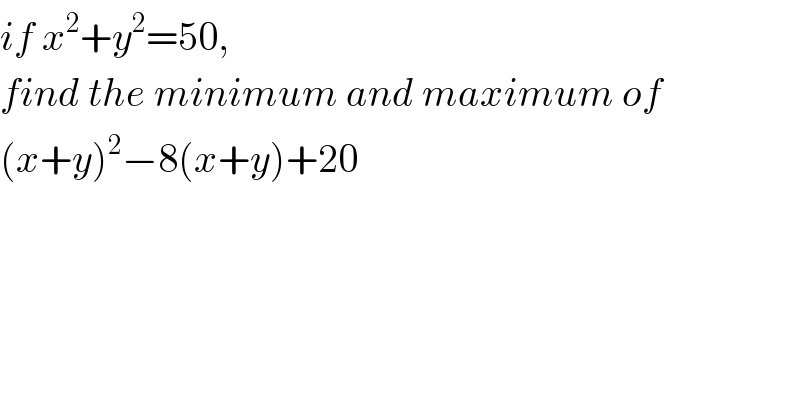
Commented by jagoll last updated on 23/Jan/20

Commented by jagoll last updated on 23/Jan/20

Commented by jagoll last updated on 23/Jan/20

Commented by jagoll last updated on 23/Jan/20
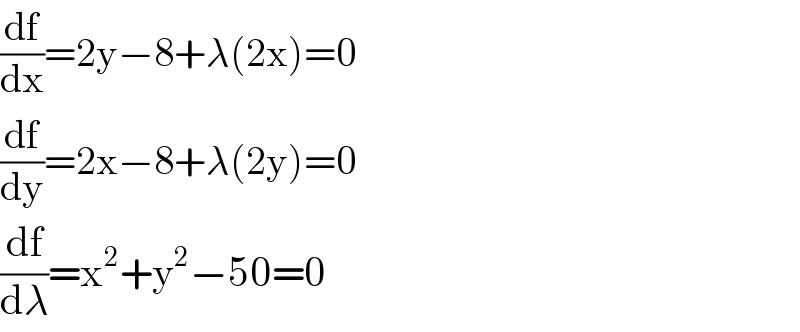
Commented by mind is power last updated on 23/Jan/20

Commented by jagoll last updated on 23/Jan/20

Commented by jagoll last updated on 23/Jan/20

Commented by jagoll last updated on 23/Jan/20

Commented by jagoll last updated on 23/Jan/20
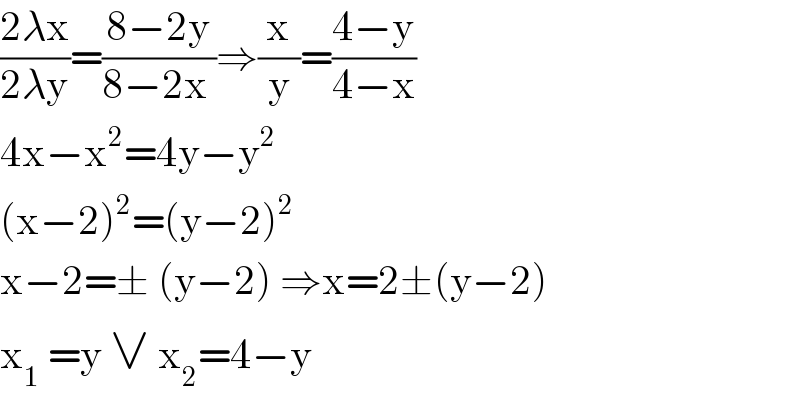
Commented by jagoll last updated on 23/Jan/20

Commented by jagoll last updated on 23/Jan/20
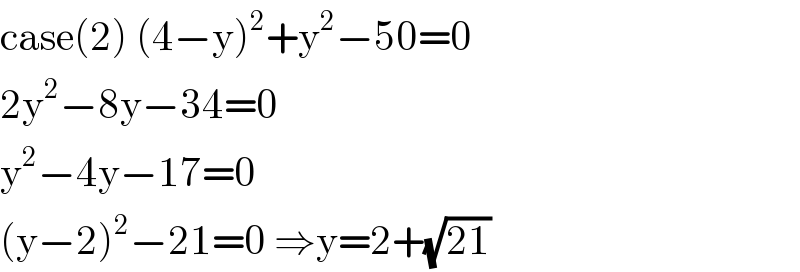
Commented by jagoll last updated on 23/Jan/20

Commented by mind is power last updated on 23/Jan/20

Answered by mind is power last updated on 23/Jan/20
![x=(√(50))cos(θ) y=(√(50))sin(θ) x+y=(√(50)).(cos(θ)+sin(θ)) =10sin(θ+(π/4))=10sin(ϕ),ϕ∈[0,2π[ x+y∈[−10,10] (x+y)^2 −8(x+y)+20=f(x+y) f(t)=t^2 −8t+20 t∈[−10,10] f′(t)=2t−8,minf=f(4)=16−32+20=4 x+y=4=10sin(ϕ),ϕ=sin^(−1) ((2/5)),θ=sin^(−1) ((2/5))−(π/4) x=(√(50))cos(θ),y=(√(50))sin(θ) mox f(−10)=100+80+20=200 −10=10sin(ϕ)⇒ϕ=−(π/2)⇒θ=−((3π)/4) x=(√(50)).−((√2)/2)=−5 ,y=−5](Q79218.png)
Answered by mr W last updated on 23/Jan/20
![it is to find the minimum and maximum of f=(x+y)^2 −8(x+y)+20 under the condition that x, y satisfy x^2 +y^2 =50, i.e. (x, y) is on the circle. let x=5(√2) cos θ, y=5(√2) sin θ f=(x+y)^2 −8(x+y)+20 =(x+y−4)^2 +4 =(5(√2) cos θ+5(√2) sin θ−4)^2 +4 =[10((1/(√2)) cos θ+(1/(√2)) sin θ)−4]^2 +4 =[10 cos (θ−(π/4))−4]^2 +4≥4 f_(min) is when cos (θ−(π/4))=(4/(10)), i.e. θ=(π/4)+cos^(−1) (2/5), f_(min) =(4−4)^2 +4=4 f_(max) is when cos (θ−(π/4))=−1, i.e. θ=((5π)/4), f_(max) =(−10−4)^2 +4=200](Q79224.png)
Answered by key of knowledge last updated on 23/Jan/20

Answered by john santu last updated on 24/Jan/20
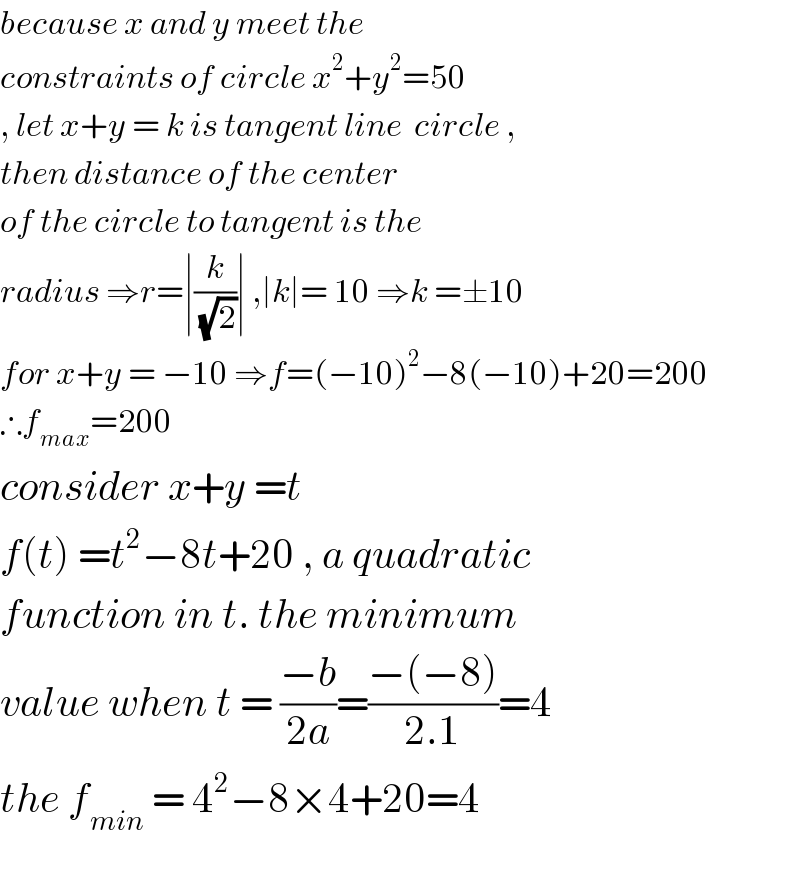
Commented by mr W last updated on 23/Jan/20

